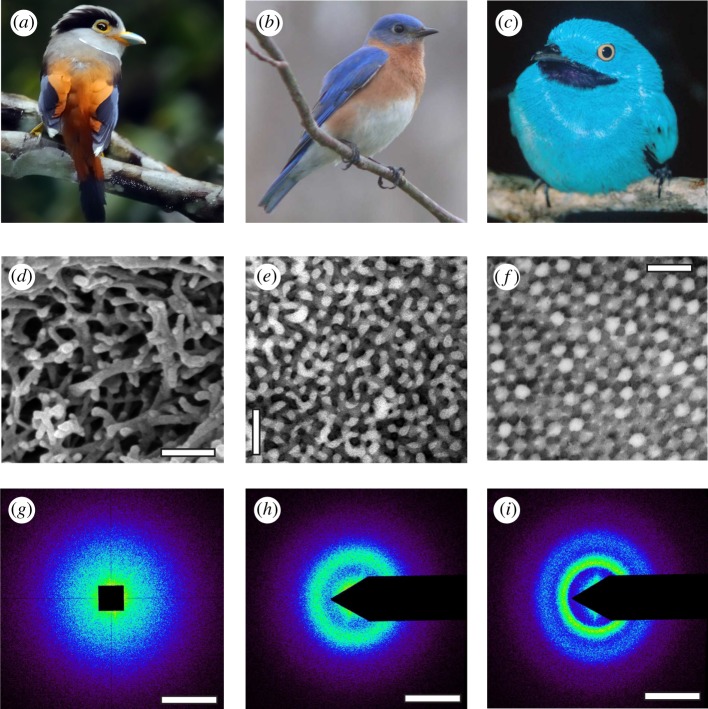Figure 2.
Diversity of non-iridescent feather barb structural colours in birds and morphology of their underlying three-dimensional amorphous photonic nanostructures with short-range quasi-periodic order. (a) Female Silver-breasted Broadbill (Serilophus lunatus, Eurylaimidae). (b) Male Eastern Bluebird (S. sialis, Turdidae). (c) Male Plum-throated Cotinga (Cotinga maynana, Cotingidae). (d) SEM image of a rudimentary nanostructure with a very thin layer (1 μm or less) of a disordered network of spongy β-keratin bars present at the periphery of the medullary barb cells from the pale blue-grey primary coverts of S. lunatus, (e) TEM image of a channel-type β-keratin and air nanostructure from royal blue back contour feather barbs of S. sialis. (f) TEM image of a sphere-type β-keratin and air nanostructure from the dark turquoise blue back contour feather barbs of C. maynana. (g–i) Representative two-dimensional small-angle X-ray scattering (SAXS) diffraction patterns for the rudimentary, channel- and sphere-type feather barb nanostructures in (d–f), respectively. The SAXS patterns for both channel- and sphere-type nanostructures exhibit ring-like features that demonstrate the isotropy and short-range spatial periodicity of these nanostructures, whereas the rudimentary barb nanostructure shows a diffuse, disc-like pattern. The false colour encoding corresponds to the logarithm of the X-ray scattering intensity. Scale bars: (d) 250 nm; (e,f) 500 nm; (g–i) 0.05 nm−1. Photo credits: (a) Yiwen Yiwen (image in the public domain); (b) Ken Thomas (image in the public domain); and (c) Thomas Valqui (reproduced with permission).

